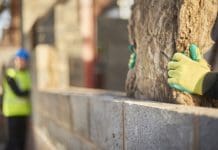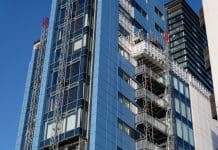Ian Streets, of About Access discusses the importance of maintaining accessibility during ongoing construction and refurbishments
“Work in progress” can be cited to excuse any number of temporary shortcomings – a tedious diversion to usual travel routes, an historic building looking less than picture perfect because of renovation works.
But it shouldn’t be offered up as a reason for failing to meet the needs of disabled people. If a building is open and its services are available, then that should be on an inclusive basis.
And if specific features are created to improve accessibility on a temporary basis whilst works are being completed, they should meet the required standards. If they don’t, then they risk presenting further obstacles for the very people they were intended to help.
Any building will undergo refurbishment at some point, whether it be a small, family-run pub where a bar needs modernisation and the operators can’t afford to close completely, or a university campus that has new buildings under construction.
Maintaining accessibility with access routes
Whatever the scenario, the access routes around the improvement works should still be maintained as accessible.
This is an aspect of construction and development that is frequently neglected. Examples are many and frequent, and they often occur in the highway, when utility companies dig up roads, kerbs and footpaths and block the usual access routes. More often than not, they will at least install a temporary ramp of plastic or tarmac, but these can prove very hazardous to wheelchair-users and to blind or partially-sighted people.
If the project involves major works within a building it is important that consideration is given to emergency egress as the usual golden rule applies – whoever enters a building must be able to leave the building. If the building is still in use and exit routes are blocked then alternative provision must be made, and easy access to such facilities as toilets should still be maintained as far as is practical.
The importance of signage
Lighting and signage are often among the first casualties of a refurbishment or redevelopment project yet can be even more important, not least because users of the building may have to pass through areas with which they are unfamiliar.
Existing signage inside and outside a property should be reviewed to make sure that it is not directing people to areas which are now inaccessible, and it may need to be enhanced to make people aware of temporary hazards and alternative routes.
Similarly, lighting locations and levels should be assessed to help people find their way safely around internal and external areas, remembering that busy routes should be better lit.
Parking accessibility
The car park of any property is a particularly important area, and the impact of any works should be considered carefully – not least because a lot of equipment and machinery is often left there. In a well-designed car park the spaces reserved for Blue Badge holders should be close to the main entrance to the building, and this should be remembered in the event of these spaces having to be moved temporarily.
It is also important to remember that for some places the car park is the main reason for visiting long after the main businesses have closed, for example a shopping centre which also has bars, restaurants and leisure facilities within the premises or nearby.
Essentially the aim is that during a period of refurbishment or redevelopment works you should maintain business as usual as far as you can. The work should be planned properly in advance and, once completed, should bring the same level of accessibility as before.
But why stop there? A major works programme could present a great opportunity to bring a property completely up to date and incorporate the latest designs and techniques to improve accessibility. Hopefully the design and construction teams will remember this, and remember also that such work is best addressed at the drawing stage.
Case study
Major road redevelopment projects are often under fire for causing inconvenience for motorists, and the criticism is even more fierce when the work necessitates inconvenience for pedestrians. But a transformational project which we examined in a major city left us very encouraged. It was clear from the start that the designers and developers had given a lot of thought to building accessibility improvements into the scheme, and to maintaining access routes during the construction phase.
The developers walked the area with access consultants to ensure that they were picking up the detail which helped them in maintaining public access for all, across the entire site.
If you want to know more, or you have a question or concern, please contact us at info@aboutaccess.co.uk













